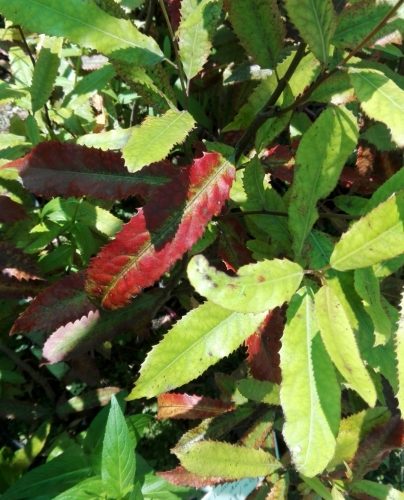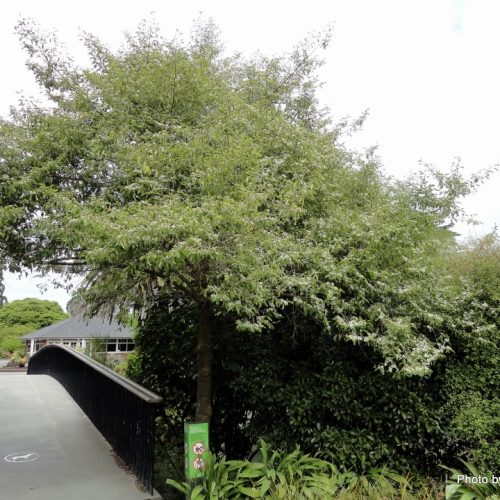Description
Dacrycarpus dacrydioides is our tallest coniferous native tree. It is endemic and found throughout the country in lowland forest. Formerly dominant on frequently flooded, and/or poorly drained alluvial soils. Occasionally extends into lower montane forest. Not Threatened, although as a forest-type it has been greatly reduced through widespread logging. Very few intact examples of Kahikatea-dominated forest remain in Canterbury. The best examples of Kahikatea-dominated forest remain on the West Coast of the South Island.
Adult trees have dull green overlapping scale leaves while juvenile trees have needle-like leaves often with a bronze hue. Dacrycarpus dacrydioides is a masting species, during mast years, a single tree can produce 135kg of fruit making Kahikatea an important food source kererū, bellbird, and waxeyes.
On swampy sites Dacrycarpus dacrydioides develops buttresses for stability which extend to the roots. Not a garden tree. Ideal for revegetation planting, particularly in wetter areas and riparian projects. This native is frost-tolerant. Slow growing, loves fertile, swampy ground but can handle drier sites with good rainfall.
Kahikatea is easy to establish and grow. It is an ideal tree for attracting birds from nearby woodlots to increase biodiversity without planting a wide selection of plant species. At Wai-Ora, we tend to predominantly grow Kahikatea from forest duff which ensures that the necessary mycorrhyzal fungi are in place in the soil and roots to help plants thrive in their new environment.








